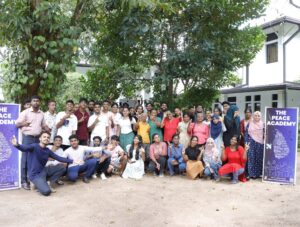Maharashtra: Pollution, climate change driving bombil & pomfret away from city coast
you get any rani fish?” Celine D’Souza, 37 asked for her favourite from across
the relatively quiet Goregaon fish market on Thursday morning. “Like a stuck
record, every time you come, you ask the same. Why don’t you buy surmai,
pomfret, halwa instead?” asks her regular fish-monger Vishaka Bhoir, 49
stubbing off a bidi. “I’ll give you a price you can’t say no to,” she lures. Celine’s
clearly not amused. She ignores her calls and heads to a stall across selling
shark and tuna. Checking for freshness under the gills she picks up a shark,
gently presses it and stares it hard in the eye. “My children and husband make
such a fuss since I buy sardines, shark or tuna all the time. Pomfret, halwa
and or surmai is beyond our means given the exorbitant prices.”
Prices weigh heavy on the mind of Santosh Singh the manager (operations) of
Gajalee too. He admits speciality sea-food outlets like his face the worst
brunt of vanishing varieties like pomfret and Bombay duck. “More than 50%
of our orders are about some or the other item made with these two. With them
getting difficult to come by prices have gone through the roof. We can only
pass on some of it to our customers, unlike other places like Delhi and
Bangalore, the customers in Mumbai are sensitive to prices. In the process of striking
a balance between trying to keep our nose above water and not losing volume of
business we have to do a really tight rope-walk,” he told DNA.
how procuring produce has become a tough task. “Earlier we’d get our fish
from just one landing site. Now we have to go to several every morning. Its
literally a fight between sea-food outlets who are all looking for bulk
quantities of the same high-end popular varieties like surmai, pomfret, Bombay
duck and crabs.” He wonders where the fish have all disappeared. It’s a
question that plagues many like Palghar resident fisherman Bharat Tandel, 42
too. “We go far into the sea(SEE MAP), yet often don’t get sizeable catch. If
we don’t make enough after paying for diesel and khalasis, what’s the point?”
remembers narrowly missing being captured by Pakistani coastguard last month.
“Our GPS broke down. Coming back with nothing wouldn’t do. Since we started
getting good-sized mackerel we kept going ahead.” Luckily for Tandel and eight
others on board, there was still sufficient day light to see the Pak coast
guard boat moving in on them and they weren’t too far from where Indian waters
begin. A quick dash back saved them in the nick of time. “We would’ve been in
prison for God knows how long,” he says folding his hands in prayer.
they sit repairing nets, others like Samuel Patil, 28, visiting from the
neighbouring Satpati village wonders why repeated representations from
fishermen asking the government to declare a fish famine have fallen on deaf
ears. “If they officially declare it we can ask them to write off loans taken
for boats by fishermen like me, at least.” A suggestion the cash-strapped
government seems loathe to listen. It simply waves the rule book. Maharashtra
fisheries minister Madhukar Chavan told DNA,
“Like I said in the assembly, a famine can only be declared if the current
yield is less than 50% of the past five years’ average.” He admits being aware
of the sharp drops in both the kind and quality of catch. “We’re in touch with
fishermen’s co-operatives and fisheries experts on how there isn’t enough
high-yield varieties like pomfret and Bombay duck, always plentiful off the
Maharashtra coast.”
Chavan, principal scientist at Mumbai’s Central Marine Fisheries Research
Institute (CMFRI), Dr Vinay Deshmukh informed DNA how the silver pomfret production of 24,000
tonnes/year in the 1980s has fallen to less than 3,000 tonnes/year. Bombay duck
too, which saw a production of 76,000 tonnes/year two decades ago has fallen to
almost 15,000 tonnes/year.
to him, pollution (“Mumbai releases 300 MLD of untreated sewage into the the
sea daily”), habitat degradation and climate change (“As the sea’s warming up
sardines and mackerel are moving north. While they have all but vanished from
the South Western coast, they are now being found in abundance even off the
Gujarat coast where they wouldn’t earlier.”) have played havoc with sea-food
production.
what compounds this problem several times over is rampant over-fishing. Our
coasts have a natural capacity to produce 5.2 lakh tonnes of fish annually but
we are going on over-exploiting.” He should know what he’s saying considering
CMFRI has data from not only the 189 landing sites in the state but the 8,214
fishing villages across the country for over six decades. In fact he wonders
why there are over 5,700 trawlers off the Maharashtra coasts when it is
equipped to handle only 2,700! “These boats literally scrape the ocean floor.
This means total destruction of habitat on one hand and catching young ones
means there simply aren’t enough to breed and replenish stocks,” Deshmukh
points out and adds, “What’s worse they want to fish almost right through the
year.”
views are in keeping with a 2006 warning by World Fisheries Centre, Kuala
Lumpur. “If we continue exploiting the sea at current rates, we will just not
have any fish left at all by 2046!” Fishermen like Ramdas Sandhe from the Akhil
Maharashtra Machhimar Kruti Samiti of course feel differently. “A fisherman
invests Rs 40 lakh to buy a trawler and average daily running costs come to Rs
20,000 a day. Which fisherman in his right mind wouldn’t try to make up for
those expenses?” he asks.
A senior bureaucrat in the state fisheries department says large-scale
corruption is a major factor responsible for the gulf in the positions
taken by Sandhe and Deshmukh. He alleges the National Cooperatives Development
Corporation (NCDC) officers inflate loan demands by fisherfolk and pocket the
difference. “Once catch falls to a big low like in 2004, decibel levels of
protests rise. Conveniently ahead of polls, the government writes off loans,”
explains the bureaucrat who adds, “Obviously the number of trawlers keeps
increasing. Despite disastrous effects on marine ecology and yield, the state fisheries
commissionerate keeps gloating about growth citing number of trawler licences
issued.” Sandhe on his part trounces such allegations pointing out how the
state often ends up allowing NCDC funds to lapse and returns large chunks of
it. Given the dynamics at work,
sustainability seems a far cry for fishing which seems stuck deep in troubled
waters. Celine may have a really long wait ahead for that flash of golden pink
at her fishmonger’s stall.



